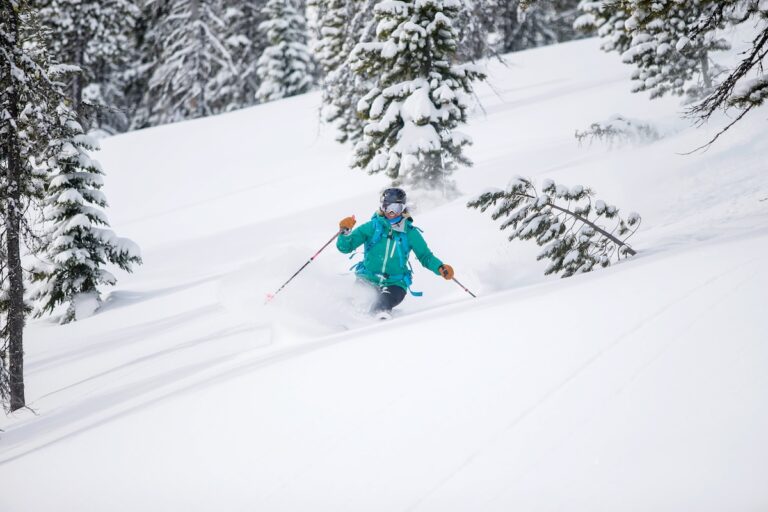Avalanches are unique among natural disasters; as Jeff Thompson, director of Idaho Panhandle Avalanche Center (IPAC), puts it, people are the ones that create an avalanche 90 percent of the time. While in-bounds downhill skiing and snowboarding on steeper runs can on very rare occasion include avalanche risk depending on current snowpack layers, backcountry touring (and side-country, adjacent to ski-area boundaries) is the most hazardous during certain snow and weather conditions.
“The nature of our sport, a lot of the time, is that it wants to lure us into the ‘dragon’s lair.’ And avalanches, unfortunately, occur at the places that attract us. We have a tendency as human beings to test theories and figure it out on our own; but with avalanches that could be a really bad decision,” says Thompson.
As IPAC director, Thompson forecasts avalanche risk and investigates regional avalanche events involving survivors and fatality victims. He is also a ski patroller and avalanche rescue dog trainer at Schweitzer. Throughout his career as an avalanche forecaster, both in Colorado and North Idaho, Thompson says people caught in slides are typically a mix of those “who are very knowledgeable and others who have no idea about what they don’t know.”
The 2023-2024 low snow year has created spatial variability in the snowpack, which has increased avalanche risk on our Inland Northwest slopes, Thompson says. “There is danger in spotty locations, like in certain windswept locations, and it comes in different forms, even on the same terrain and during a week time span. We haven’t had a lot of good skiing and snowboarding this year, so excitement can lead to a trap for bad decision-making.”
As a backcountry skier himself for the past 30 years, Thompson says he has experienced “the retreat game,” where he has reassessed his situation and decided not to proceed. Once you’re in the backcountry, unless you’re dealing with a life-saving situation, calling for help isn’t a viable option when you realize you’re in avalanche-prone terrain, because a search and rescue team isn’t going to put themselves in harm’s way.
If you’re out there and decide not to proceed, “re-trace your steps,” Thompson advises. “You got to that point safely, on the route you traveled, so the best decision is to go back the same way—even if it’s uphill and hard travel—rather than flirt with the 50/50 chance of proceeding and a bad situation happening. You don’t always know if you made the right call, but at least you get home and have an opportunity to go out again.”
Avalanche Safety Education & Awareness
Avalanche safety education courses teach about the different ways that snow deposits on the mountain and how to “read” terrain in order to personally determine the safest backcountry touring routes, according to Thompson. But taking a class is just the start. To better your avalanche awareness, venture outdoors with others who are more experienced and stay updated on current avalanche conditions from official forecast reports, such as the detailed reports published twice a week on the Idaho Panhandle Avalanche Center website (Idahopanhandleavalanche.org) every Tuesday and Friday by 7 a.m.
Some of Thompson’s forecast reports include details like “low frequency, high consequence.” It’s lucky situations, he says, when backcountry skiers “get away with things,” which can skew one’s personal risk acceptance. Which is why Thompson says it’s important that after returning home safely, all snow recreationists—whether skiing/riding, snowshoeing, or snowmobiling—should realistically assess their latest experience and ask themselves, “Did I actually make good decisions, or did I get away with something today—and, for whatever reason, snow didn’t slide that day.”
At the same time, he says, “We shouldn’t blame people that get themselves in trouble. We need to learn from others’ mistakes and be honest with ourselves. There is lots of decision-making that happens in these situations, and hindsight is always 20/20.”
Thompson cautions against becoming complacent, especially with familiar places. “Every line is safe to ski at some point—but not every time. It’s a patience game—a waiting game—and it takes experience to learn that,” he says. Most avalanche courses happen early winter, so plan ahead and visit the IPAC website for more information and check the online calendar in fall 2024 to register for a course.













